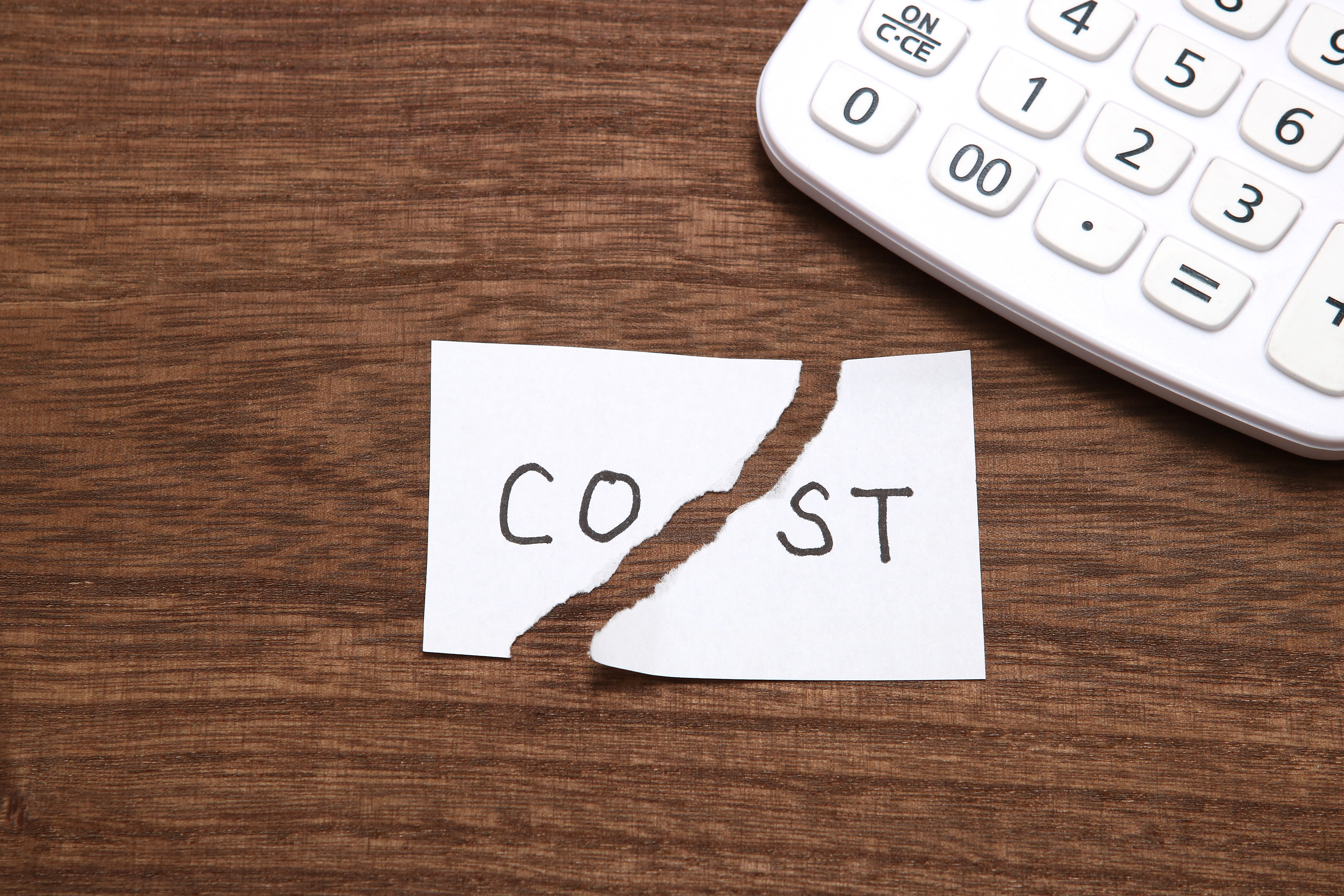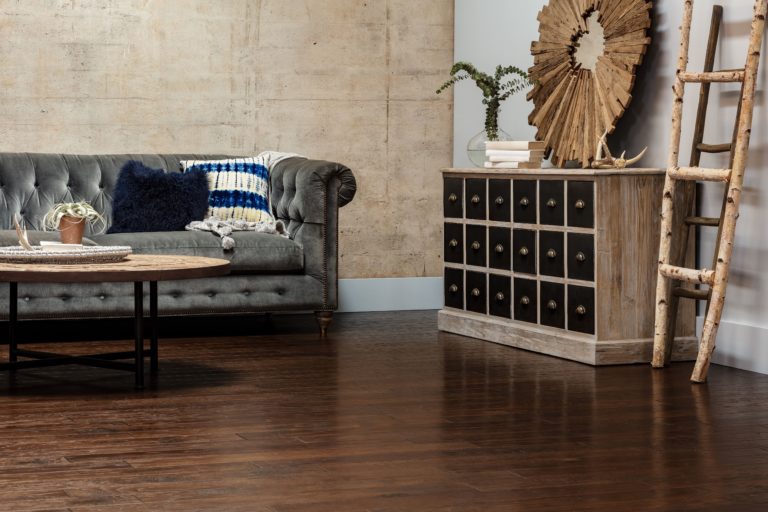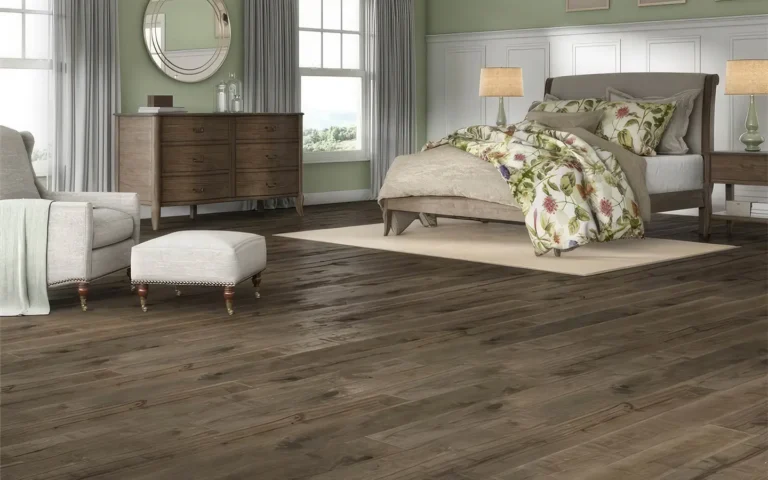This post may contain references or links to products from one or more partners of our parent company and/or subsidiaries of our parent company. For more information, visit this page.
April 6, 2020
It’s clear you want hardwood floors, because hardwood floors are the bees. freaking. knees.
But then you start looking up wood flooring costs… and everything becomes completely confused. Every price tag seems to come with some kind of unexpected add-on. You finally decide on a type of wood flooring that’s in your price range, only to realize the installation pushes you outside your budget.
It’s enough to make you question the pros and cons of hardwood flooring altogether. You’re ready to throw in the hardwood towel and start comparing carpet vs. hardwood and googling the pros and cons of tile vs. laminate.
Don’t despair! Don’t give up on wood. Don’t stop believin’. We’re here to help.
We’ve polled flooring experts from all over the country about factors that affect the cost of wood flooring. Below, we’re going to walk you through every one of them, from the cost of different hardwood materials to the price gaps between engineered and solid hardwood floors—and even hardwood floors’ installed pricing.
So before you turn to types of tile, read on. Here’s everything you need to gauge the cost of hardwood floors.
Your wood flooring cost highly depends on the wood species you choose
First and foremost, your wood flooring costs are going to be largely based on the species of wood you choose. If you want an exotic species of wood, you’re going to be paying more. If you want a domestic species of wood, you’re probably going to be paying less.
The harder (and more exotic) the wood, the higher the cost
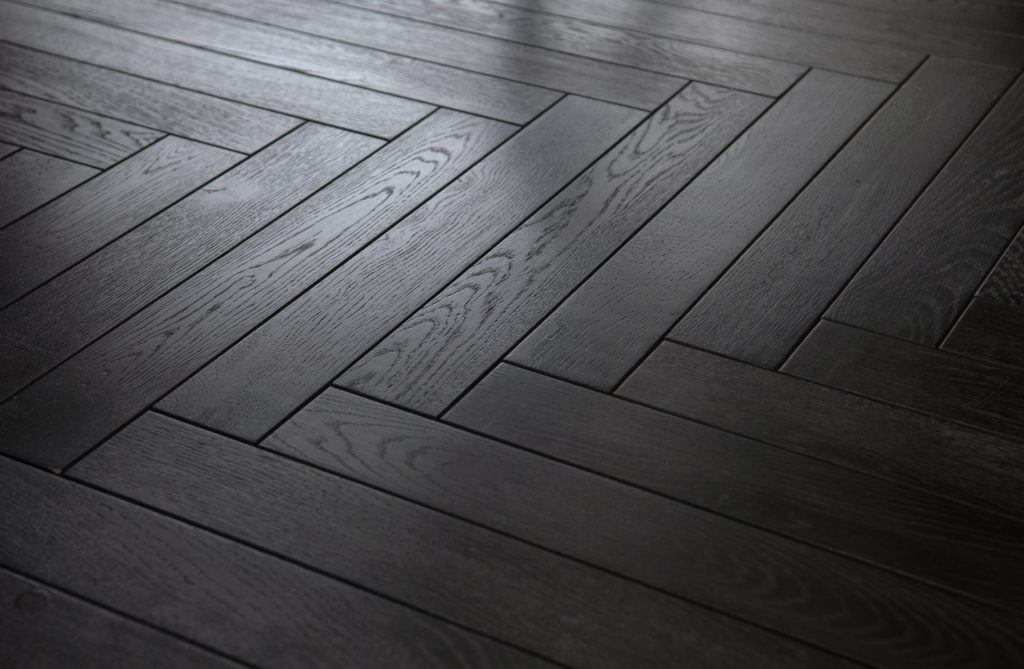
Basically, the more rare and exotic the wood, the more expensive the material. Exotic hardwoods also happen to be the most durable and hardest of all wood floors, one of the many reasons they’re so prized.
If you look at the Janka Scale (which we use to rate the durability of wood), you’ll see that exotics—Mahogany, Brazilian Cherry, Brazilian Walnut, etc.—are near the top. They’re also the most expensive. Domestic hardwoods like Oak and Black Walnut, on the other hand, are a little less expensive.
If you’re looking for the most affordable option, check out some popular softwood species
Pine and poplar are the most common softwood species that you’ll find on the flooring market. The drawback? Softwoods are not known as the most durable flooring choices.
That’s not to say that softwoods aren’t lovely. Pine has been used in homes for hundreds of years, and poplar’s natural color variations make it a perennial favorite. Both of these wood flooring types are popular for a reason, after all.
Non-traditional wood species make a great middle ground between affordability and strength
We encourage you to check out some more “non-traditional” options out there. They make a great middle ground between affordability and strength. Take cork, for example. As our guide to the pros and cons of cork flooring will tell you, this material is rugged, affordable, and comfy.
Pro tip: one of the best cork flooring options on the market is installed via peel-and-stick tiles, just like the Home Depot peel-and-stick carpet tiles everyone is so keen on these days.
We’d also urge you to check out this guide to the best bamboo flooring on the market. Strand-woven bamboo is way up on the Janka Hardness Scale with classic exotic woods like Brazilian Walnut. So if you’re interested in an eco-friendly, sustainable choice, weigh the pros and cons of engineered bamboo flooring.
Best Brands of 2024
How does solid vs. engineered affect the cost of wood flooring?
The quick answer? There’s no quick answer. Sorry to disappoint (we know, we know—total bait-and-switch). There are a lot of factors that affect engineered wood’s cost. But here’s what we can say.
- Engineered and solid hardwood floors are generally pretty similar in price for most domestic wood species.
- The more exotic and precious the wood, the more you start seeing a gap between solid and engineered wood flooring costs—since engineered wood uses less “real” wood.
- Translation: if the best hardwood floors for you are all, let’s say, Brazilian Walnut (aka Ipe), your engineered choices are going to be much more affordable than your solid choices.
- If you’re factoring in hardwood flooring’s installed pricing, click-together flooring is usually going to be less expensive than flooring that has to be attached to a subfloor. And engineered hardwood is more often sold as click-together flooring than solid hardwood is. We’ll talk about that more in a bit, though.
Engineered wood flooring cost vs. solid wood flooring cost
If we’re talking overall price ranges, here’s how they pan out:
- Low: solid—$3 to $6 per square foot; engineered—$3 to $5 per square foot
- Mid: solid—$5 to $10 per square foot; engineered—$5 to $10 per square foot
- High: solid—$8 to $18 per square foot; engineered— $8 to $14 per square foot
The cost of engineered wood flooring is also determined by its construction
If engineered wood is your thing (‘cause it’s amazing stuff), you’ll find that aside from species, the cost of engineered wood flooring depends on two main things:
- The thickness of the veneer (that top layer of hardwood). A thicker veneer is pricier, but it’s also able to be refinished—potentially adding decades of extra life to your floors. This is much less important, however, if you buy factory-finished engineered wood, which is generally durable enough to avoid regular refinishing.
- The construction of the core. Specifically, whether it’s made of plywood for fiberboard. A plywood core is usually more expensive, but it’s also more durable.
For more information on what makes a good engineered hardwood floor, check out our guide to finding the best engineered hardwood flooring.
Side note: even the best engineered hardwood is not a totally waterproof flooring option. For that, you’re going to want to look into some different types of vinyl flooring. That said, engineered hardwood flooring is more tolerant to spills and humidity than solid hardwood is.
Wood floor designs may increase cost
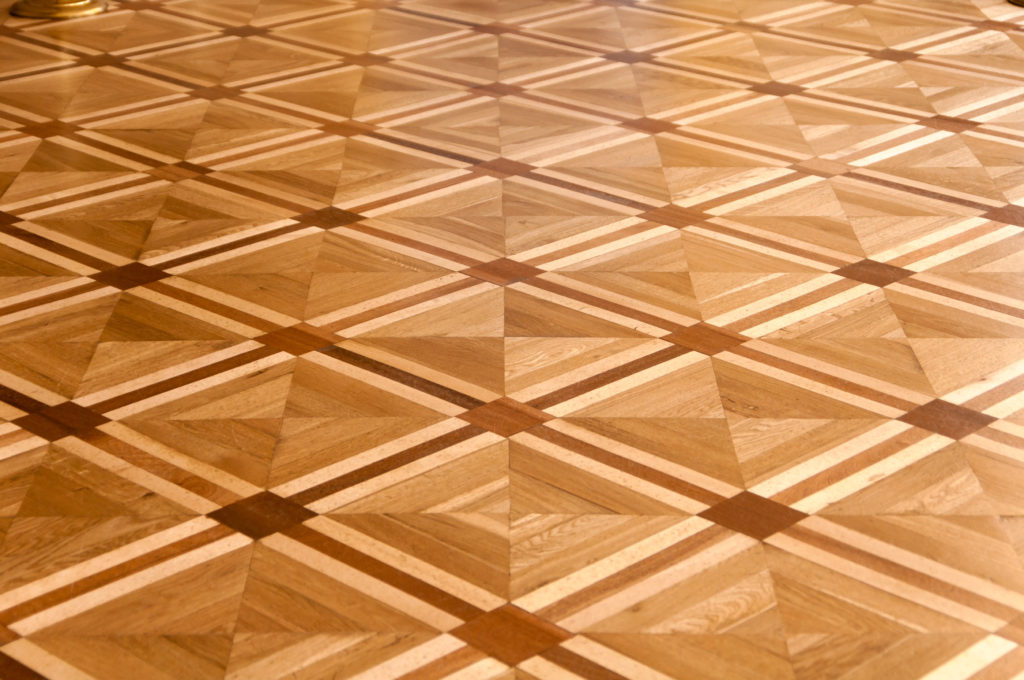
If you’re dreaming of beautiful wood floor designs as far as the eye can see, we don’t blame you. There’s nothing classier than some herringbone parquet in the living room or some chevron rows in the hall. We’re getting misty-eyed just thinking about it.
But remember: the more intricate your pattern, the more time it’s probably going to take to install. And the more time it takes to install, the pricier it’s going to be. So let’s talk about installation, shall we?
To get your hardwood flooring installed, pricing varies
You’re going to see a big range in your hardwood flooring installed pricing. And it depends on a lot of variables. Is labor on the cheaper end in your area? Are you going for an intricate design? Are you going for a nail-down, glue-down, or click-together floor? The list goes on. Whatever the case, you’re almost always going to be charged on a square foot basis—not by the hour.
Tongue and groove vs. click-lock installation—what’s the difference?
Most solid wood floor planks are constructed with tongue and groove technology. The boards are made to fit into one another and usually need to be glued, nailed, or stapled to the subfloor.
Click-lock or click-together flooring, on the other hand, is a type of installation method in which your flooring planks “snap” into each other. These floors stay in place thanks to friction and pressure, meaning you don’t have to glue or nail them down—hence their name, “floating floors”.
If you’re planning on a do-it-yourself flooring project, floating floors are a good choice. More importantly, they greatly reduce the amount of time and effort a professional needs to install your flooring—often making installation cheaper. Not sure what kind of flooring is best for you? Do some research into the advantages and disadvantages of floating floors.
The condition of your subfloor can affect the installation cost too
It goes without saying, but we’re gonna say it anyway: you want to be sure your subfloor is level and dry before starting installing any wood flooring type. The subfloor may need to be repaired prior to installation, resulting in an increased installation cost.
A floating floor is more tolerant to subfloor imperfections since it floats above just about any material. But take the advice of our experts—you should address any moisture issues now so you don’t get a mold problem later.
And as always, we definitely recommend you turn to a flooring store in your area with any subfloor questions.
Hardwood floors’ installed pricing quotes can be through the roof—a “partial” DIY can help
A lot of people feel frustrated with additional add-on costs when it comes to installation. The little bits here and there can really add up.
One of our flooring experts from Alabama broke down some of these additional costs for us:
Translation: you can save a lot of money by doing a couple of things yourself!
Don’t pay someone else to move the furniture
Enough said—plan to clear the room out yourself and you can save some money on labor cost.
Consider doing the demolition yourself to reduce installation cost
If you want to save some clams but you’re not really sure how to replace flooring, think about doing just the demolition yourself. Ripping up carpet from decades ago? There’s a YouTube for that. And who knows, it could be therapeutic. #DemolitionFeelsGood.
Not sure if the job is too big? Our experts pointed out that they will often guide customers on demolition uncertainties and subfloor questions. Ask your local flooring dealer for advice.
DIY savvy? Look for click-together flooring
DIY flooring is made easy(er) with click-together flooring—if you’re handy with tools and want the elite self-install bragging rights, talk to your local flooring folks about doing it yourself.
Thinking about redoing the bathroom or kitchen next? Don’t bother with the tile vs. wood floor debate; go straight to snap-together tile flooring.
Conclusion: do your research with a local retailer
Yes, there are still a lot of choices to make, but you won’t regret the fabulous investment of any type of wood flooring. You won’t just increase the value of your home—you’re getting something amazing to walk on for the rest of your life!
But we know it’s hard to price out exactly what you need. And that’s why we’d really, really urge you to talk to a flooring retailer near you. Before you give up on your hardwood flooring dreams and convince yourself that fake wood flooring is the only answer, ask the experts. They can give you all the precise info you’ve been looking for. Just keep what you learned in this hardwood flooring cost guide in mind, and you can’t go wrong!
And for more info on all types of flooring (and tons of side-by-side flooring comparisons), don’t forget to check out:
About The Author

Kimberly Severance
April 6, 2020
Best known as a therapeutic horseback riding instructor and mom to a 3-year old sassy dachshund, Kim enjoys writing and a good research project. She also loves a good DIY project—probably inspired by growing up in an old Connecticut colonial.
